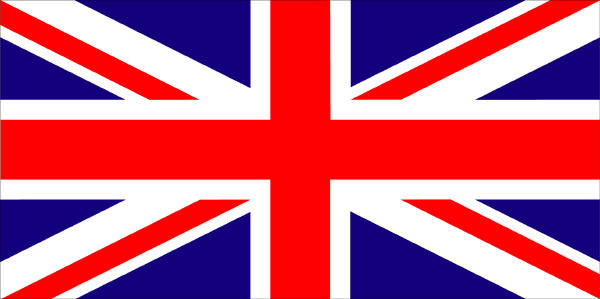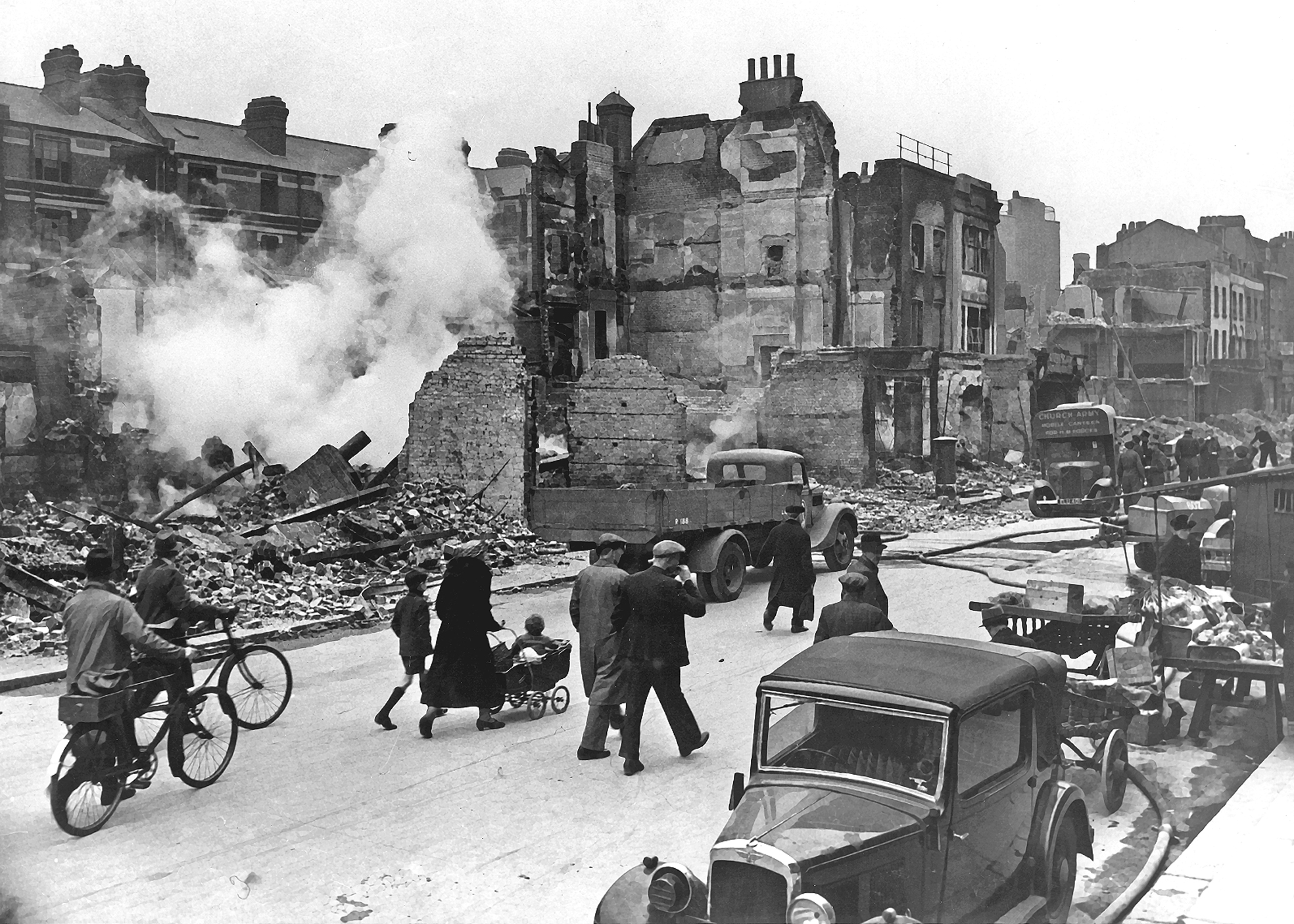Signal Corps who transmitted vital communications between combat troops and commanders of the armed forces so I asked her some questions about the time. She was one of the many women who worked quietly behind the scenes during World War II and had a very uncommon life in the service that illustrates both an average and extraordinary life of the time.
 The Union Jack from dwcc.eu
The Union Jack from dwcc.euThe Early Days and the Blitz
During World War II life was difficult no matter where you lived. The Great Depression had affected the whole world, there was no escaping it. Between that and the war everybody made sacrifices, men and women. According to David Diffrient though, while there is an understanding of sacrifices that women make in time of war there is still a “lack of consciousness among many” even with the men they sacrificed for (pg.45). My Grandmother was no different. During this time rationing supplies was a common practice in all of the countries in the war. She recalls having to wait in line an hour and a half for two bananas. About this she said “I was actually happy when I joined the service because you got better meals in the service.” Clothing was rationed too. My Grandmother recalls how lucky her sister was to be able to have a dress for her wedding.
While rationing was a hardship of the time Americans can relate to, life in Britain during WWII was far more difficult than life in America because it was a warzone. America has been fortunate as a country to be bordered by oceans allowing it to be isolated from war. This is not to say the US knows nothing of war or tragedy but the last time America was attacked by another nation was Pearl Harbor and that was not even mainland, 9/11 while tragic was an act of terrorism not war. During WWII however, Britain was the last major hold out against Hitler in Europe and during Hitler’s bombing campaign known as the Blitzkrieg the entire country was a warzone. This is something hard to imagine for Americans, although we have tried, as we have never experienced anything like it.
 a picture of England during the Blitz from millerpla.net
a picture of England during the Blitz from millerpla.netRecalling this time my Grandmother had a lot to say. She lived in the suburbs and remembered everyone building tank traps in the streets because they all expected a full-on Nazi invasion to proceed after the bombings. During this time all British citizens were given the order to “black it out” during the air raids. This involved covering the openings of one’s home to make sure no light entered or exited so it looked abandoned to discourage Nazis bombing it as it would appear no casualties would result from it. My Grandmother says there were two types of bomb shelters families used during the time. One was simply a steel table everyone got under akin to the ridiculous drills American children did in school in the 50’s when we were certain that the Russians were going to bomb us into oblivion, and the other was called an Anderson shelter which was a shed in the garden built to withstand the bombings. One particular event she remembers in tragic detail was the destruction of the Lady Owens School which was near her home. She recalls “the whole place was leveled with everyone still inside. You could hear the moanings of the survivors but no one was able to dig them out and they died … The stench (of the buried corpses) was all you could smell for quite some time”. She said that later the ground was consecrated and is presently a cemetery.
In the Army Now
World War II was a difficult time. Everyone who was able to lend a hand did according to my grandmother, Joan. America was similar in that nearly every able bodied man served in the military during that time. Because of this many jobs were left open and many of them were factory jobs important to supporting the war effort. Factories had to search for new workers and the solution seemed obvious according to Bilge Yesil “women entered better-paying and new kinds of occupations and increased their participation in the labour force during the Second World War” (pg. 104). This is when the now iconic image of Rosie the Riveter started appearing to encourage women in the United States to join the war effort.Though not all women ran out and joined the workforce that did not make the non working women less significant. During wartime Diffrient reminds “housewives and mothers took on numerous responsibilities outside the home” (pg. 48) and even the little things were “combined with patriotic motives and injected with a sense of public duty” (Yesil pg.112).During this time “media discourse rendered home front experiences into patriotic and selfless acts, and embraced homemakers into the war effort” (Yesil pg.110).
Great Britain was no different and having entered the war much earlier, was far ahead in getting women involved. My grandmother was among the thousands of British women who supported the war effort. She did not have the typical factory job that it is often assumed women took during World War II. Instead she was drafted into the signal corps which was typical of the time in England but seems rather strange to us in the United States as women do not get drafted here.According to my Grandmother in England they never referred to this as a draft but in Britain the proper term the referred to the draft by was a “call up”. At the time she said all women 18-34 were called and men were taken younger than that. In fact the need for recruits in Britain was far greater than in the US. My Grandmother recalls “At the time I was called up I had a broken left arm but they still took me”.
A Chance Romance
In the Signal Corps her job involved translating intelligence and making sure it got to the right people. She was often knowledgeable of information of many significant events before they happened such as D-Day. While in the service she met her future husband, an American soldier named Eugene. He worked as an engineer and had to go places to build bridges and makeshift airfields in war torn Europe to allow the rest of the soldiers to traverse the terrain. He would have to fight with the rest of the army and he was involved in liberating a concentration camp (we don’t know which one because he never talked about it). This made my Grandmother’s job harder on her because she would almost always know where he would be next and what type of resistance he would encounter but was not allowed to tell him. Lucky for them both he walked away fine and after the war they got married and she went with him back to America.
 Joan and her Yank Husband after the war from her archives
Joan and her Yank Husband after the war from her archivesName Dropping
Outside of her regular duties in the corps my grandmother met some historical figures in her line of work and went to some special places few can say they have been. She was often courier of top secret documents that she would have to deliver personally to Winston Churchill’s bunker,, though she admits she was never lucky enough to meet Churchill himself.
She did meet the famed British General Montgomery (or “Monty” as she calls him). He once inspected the camp she was working at and she was fortunate enough to shake his hand.
Another time she got to meet Eleanor Roosevelt when she came to spoke to war-brides about the differences about the United States and England. While she never said it at the time and told me only reluctantly my grandmother described Mrs. Roosevelt as a “horse faced woman but very nice.She never smiled though”.
 Eleanor Roosevelt (visual approximation) from freenaturephotos.com
Eleanor Roosevelt (visual approximation) from freenaturephotos.comOne thing she recalls Roosevelt discussing was the language differences. As we all know the English we speak in America is very different than the English they speak in England. Anyhow she said that Eleanor explained little things like how in America we say we are “doing the dishes” but in England they “wash up” and what they call petroleum is gasoline to us. My Grandmother called this very informative but said it was not enough to prepare her for life in America. One misunderstanding she was not prepared for was when she visited the turkey farm of my grandfather’s siblings. She wanted to tell his sister that the atmosphere was nice and that she had a very motherly aura about herself so my Grandmother called her “homely”. This led to an amusing misunderstanding as in England being homely does not mean ugly but instead motherly or homey. She does not use that term anymore. The other really funny one comes from an idiomatic difference. According to my Grandmother in England when one wants someone to call them on the phone they don’t say “call me” but say “knock me up” the genesis of the term due to the fact those old fashioned doorknockers are very common in England, but in the US it has a sexual connotation. She was very surprised the first time she made this mistake in America but thought it was funny so to this day she still says it. So remember if a British person asks you to “knock them up” they want you to call them.
So that in a nutshell is the story of my Grandmother’s life during World War II. Like everyone of the time she endured the same hardships and was one of the typical working women of the time that offered up their service and dedication to the cause. And while living a seemingly common life for the time she was involved in many important operations and met some important people that we only know today from the history books which shows us that even a common life at the time can be something quite uncommon down the road.
Works Cited
Brown, Joan. Personal interview. 23 April 2011.
Diffrient, David Scott. "HISTORY AS MYSTERY AND BEAUTY AS DUTY IN THE 1940S HOUSE (1999)." Film & History (03603695) 37.1 (2007): 43-53. Academic Search Premier. EBSCO. Web. 8 May 2011.
Milward, A.S. “The End of the Blitzkrieg”. New Series, Vol. 16, No. 3 (1964), pp. 499-518 Published by: Blackwell Publishing on behalf of the Economic History Society Stable URL: http://www.jstor.org/stable/2592851
Yesil, Bilge. "'Who said this is a Man's War?': propaganda, advertising discourse and the representation of war worker women during the Second World War." Media History 10.2 (2004): 103-117. America: History & Life. EBSCO. Web. 7 May 2011.
Visuals
The Union Jack http://www.dwcc.eu/Union%20Jack.jpg
England during the Blitz http://millerpla.net/wp-content/Pictures/LondonBombedWWII_full.jpg
Eleanor Roosevelt horse www.freenaturephotos.com/photos/animal-photos/images/horse.jpg
Hi Will,
ReplyDeleteDon't forget to add a title!
Intro is good, as is the hyperlink.
You'll need to add a caption to all embedded images. And the bibliography must be labeled either as Works Cited or References, so I can tell which documentation style you are using. (And of course, that will determine how the citations should be done. Right now, the sources list is neither MLA or APA.)
This was fine for the oral presentation, just don't forget there are additional requirements for the final version.
ReplyDeleteAlso, captions for each embedded image must include the SOURCE. (See my examples in the “Research Project - FINAL REQUIREMENTS” on the Blackboard Assignments page.) Each image source must also be included on the bibliography list.